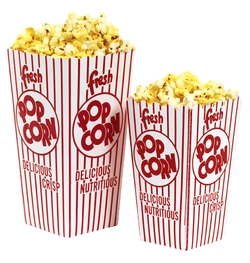Popcorn Update….Maybe
Posted on August 18, 2014 at 3:49 pm

Remember when I explained how movie theater lobbyists created a loophole in the rules requiring places that serve food to let you know the calories and fat content of your purchases?
I don’t think it’s likely to happen, but it’s worth mentioning that two Senators are trying to close that loophole. Ignore the inflammatory headline. No one is “coming for your popcorn.” This is not Mayor Bloomberg at the federal level. This is making the market work efficiently by giving you the information you need to make a wise decision. Which is why it probably won’t happen.
Of course if they really wanted to come down hard on popcorn, they’d make the theaters let you know what their share of the profits is from the wildly inflated concession stand prices. I don’t begrudge the theater owners the chance to make enough money to stay in business. Most of the profits from ticket sales go to the studios. But purchasers might want to know that “when you pay $6 for a medium-sized bag of popcorn in theaters, you’re paying a 1,275 percent mark up compared to the cost of buying three 3.5-ounce bags of microwaveable popcorn sold in a box for about $3 at the store.” Put it this way: the concession stand pays more for the cost of the cardboard container than it does for the popcorn and “butter substitute” that goes into it.


